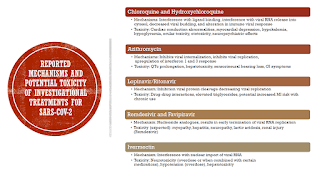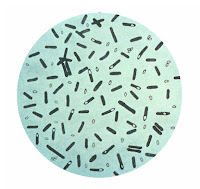Understanding mRNA Vaccines
Disclaimer: I am not an infectious disease or immunology specialist. I have also received both doses of the Pfizer-BioNTech vaccine. I do not have any financial interest in any vaccine maker. This is intended for educational purposes only and should not be considered medical advice.
The
speed in which a vaccine was developed against SARS-CoV-2 was astounding. This was possible thanks to a relatively new
technology utilizing messenger RNA. In this article I will attempt to explain
how the vaccine works and some considerations for those who may be hesitant to
receive the vaccine. I am writing this in part because I was skeptical of this vaccine technology when I first heard about it last year. In order to fully understand the relative risks and benefits
and mRNA vaccines in the current pandemic, I think it is important to have a
little background on the virus that causes COVID, SARS-CoV-2. I will try my
best to avoid jargon and explain the concepts as clearly as possible.
How SARS-CoV-2 Replicates
SARS-CoV-2 is a coronavirus that contains a single strand of
RNA as its genetic material.1 RNA is a form of genetic material that is
used by cells to produce proteins. The
sequence of the RNA is read by specialized proteins called ribosomes. Ribosomes
use this sequence to produce specific proteins. In the case of SARS-CoV-2, the
RNA is what is called positive strand.1
This means that the RNA is in the proper form to be immediately read by
ribosomes to produce new viral proteins (compared to viruses that require an
intermediate step to create functional RNA).
The viral genome contains all the information needed to produce new
viral particles. After entering a cell, the viral genome uses the host cell to
produce copies of the original virus which are then released to infect other
cells.
Source: https://www.mdpi.com/2076-0817/7/3/68/htm
Messenger RNA vaccines
Messenger RNA (mRNA) is produced in every cell in the body.
It takes the information that is encoded in DNA (the primary genetic material
in humans) and transports it outside the cell nucleus. It is then used by
ribosomes to produce proteins. Once the mRNA is released from the ribosomes, it
is broken down by the cell to its individual nucleic acids. Messenger RNA can be produced in a lab with
whatever sequence a researcher wants. This process has many potential uses, one
of which is creating a vaccine. Once the amino acid sequence of a protein is
known, mRNA that will produce that sequence can be made very quickly. This in part explains how quickly the current
mRNA vaccines were developed.
In the case of the Pfizer-BioNTech and Moderna vaccines, the
RNA encodes a version of the SARS-CoV-2 spike protein.2 This protein is critical for viral particles
binding to the cells. If an antibody is bound to the spike proteins then the
viral particle cannot enter the cell and replicate, essentially stopping
infection before it starts.
Messenger RNA sequences will spontaneously break apart over
time. That is one of the reasons they need to be stored at such low
temperatures. This process can also be slowed by encapsulating the mRNA with a
lipid layer.3
This lipid layer can also contain molecules that will increase uptake into
specific types of cells. The exact makeup of the RNA and lipid are considered a
trade secret in the case of the Pfizer vaccine.
What Happens after Injection
After receiving the vaccine shot, the lipid coated mRNA is
taken up by a certain kind of immune cell called a dendritic cell. These cells are
some of the scout cells of the immune system, constantly looking out for
foreign particles to take in. Once a dendritic cell encounters foreign material
(in this case the vaccine particles), it engulfs in a process called
endocytosis. The mRNA then begins to produce copies of the SARS-CoV-2 spike
protein, which the dendritic cell displays on its surface.4 The dendritic cell then becomes activated and
it travels to the lymph nodes where more specialized immune cells (B and T
cells) are present and shows the particles to these cells. B and T cells then begin creating antibodies
to the protein encoded by the mRNA (in this case the SARS-CoV-2 spike protein).
If the immune system then encounters the protein again, it is activated and
produces large amounts of antibodies, neutralizing the infectious particles. The process from dendritic cell activation to
immunity is the same for all vaccines, as well as immunity that occurs
following infection.
source: https://en.wikipedia.org/wiki/RNA_vaccine#/media/File:RNA_vaccine-en.svg
Does it work?
Early trial data from the Pfizer-BioNTech vaccine trials
appear to show that their mRNA vaccine is effective in preventing COVID.
However, the true effectiveness is not exactly clear because the number of
infections in both groups was very low (8 of 21,720 in the vaccine group, 162
of 21,728 in the placebo group). The study reports this as 95% effectiveness.2 Somewhat promising in the data was a decrease
in the number of severe infections (defined as confirmed Covid-19 with one of
the following additional features: clinical signs at rest that are indicative
of severe systemic illness; respiratory failure; evidence of shock; significant
acute renal, hepatic, or neurologic dysfunction; admission to an intensive care
unit; or death. after the first vaccine dose) after the first dose was received
(1 in the vaccine group, 9 in the placebo group).2
Data on the Moderna vaccine is similar to the
Pfizer-BioNTech vaccine. There were 185 infections in the placebo group
compared to 11 in the vaccine group (15,210 participants in each group) with a
reported effectiveness of 94.1%. They reported 30 severe infections and one
death, all of which occurred in the placebo group.5
Questions that remain are the true effectiveness when
community prevalence is high or in cases of high-risk exposures such as living
in the same house as someone who is sick.
There is also no data on how long the immune protection will last or if
booster shots will be needed (similar to boosters against tetanus).
Risks
The question of risk is a challenging one. With any kind of
shot or medication there is always the risk that an allergic reaction could
occur. There are also risks related to the initial immune response (either with
the first or second dose). This response can result in fever, chills, GI
symptoms, muscle aches, pain at the injection site, etc.2,5 For most people, these symptoms will be just
a nuisance. However, for medically
fragile individuals (such as the very elderly) these symptoms could result in
serious illness. There are also concerns regarding something called immunologic
(or pathogenic) priming. This involves an overaggressive immune response when
exposed to the virus following vaccination (or response to vaccination
following infection).6 The decreased incidence of
serious infection in the vaccine group suggests to me that this is less likely
to occur with this vaccine and this disease, but we are still waiting for
intermediate and long-term data.
Finally, there are the concerns regarding introducing
foreign genetic material and utilizing host cells to produce the viral protein.
There is a lot of distrust of large pharmaceutical companies and even the
medical community. The fact that major components of the vaccine are considered
trade secrets does not help.
My Conclusion
I was hesitant to take an mRNA vaccine when I first started
hearing about their development over the summer. I preferred a more established technology,
particularly given how little was known about SARS-CoV-2. However, after further thinking about how the
vaccine works, I came to the conclusion that it should not be more dangerous
than getting COVID itself.
I work in the Emergency Department, caring for patients with
SARS-CoV-2 every shift. On occasion we even have to intubate (place a breathing
tube) these patients, a procedure that is high risk for exposure. In my mind it
was likely that I would get COVID at some point, even if I take appropriate
precautions. Given this, I gladly got
vaccinated as soon as I was able. I also recommended the vaccination to my
parents and sisters.
My risk is different than most people, though. For those that are young and healthy, I can
understand being hesitant to receive a still experimental vaccine. Thankfully, by the time all of the high risk
groups are vaccinated there will be much more safety and effectiveness data
available so that each person can make an informed decision.
References
1. Machhi
J, Herskovitz J, Senan AM, et al. The Natural History, Pathobiology, and
Clinical Manifestations of SARS-CoV-2 Infections. J Neuroimmune Pharmacol. 2020;15(3):359-386.
2. Polack
FP, Thomas SJ, Kitchin N, et al. Safety and Efficacy of the BNT162b2 mRNA
Covid-19 Vaccine. N Engl J Med. 2020;383(27):2603-2615.
3. Pardi
N, Tuyishime S, Muramatsu H, et al. Expression kinetics of nucleoside-modified
mRNA delivered in lipid nanoparticles to mice by various routes. J Control Release. 2015;217:345-351.
4. Schlake
T, Thess A, Fotin-Mleczek M, Kallen KJ. Developing mRNA-vaccine technologies. RNA Biol. 2012;9(11):1319-1330.
5. Baden
LR, El Sahly HM, Essink B, et al. Efficacy and Safety of the mRNA-1273
SARS-CoV-2 Vaccine. N Engl J Med. 2021;384(5):403-416.
6. Lyons-Weiler J. Pathogenic priming
likely contributes to serious and critical illness and mortality in COVID-19
via autoimmunity. J Transl Autoimmun. 2020;3:100051.





Comments
Post a Comment